200 Mile Torture Test
Story and Photos by Trevor Hunter
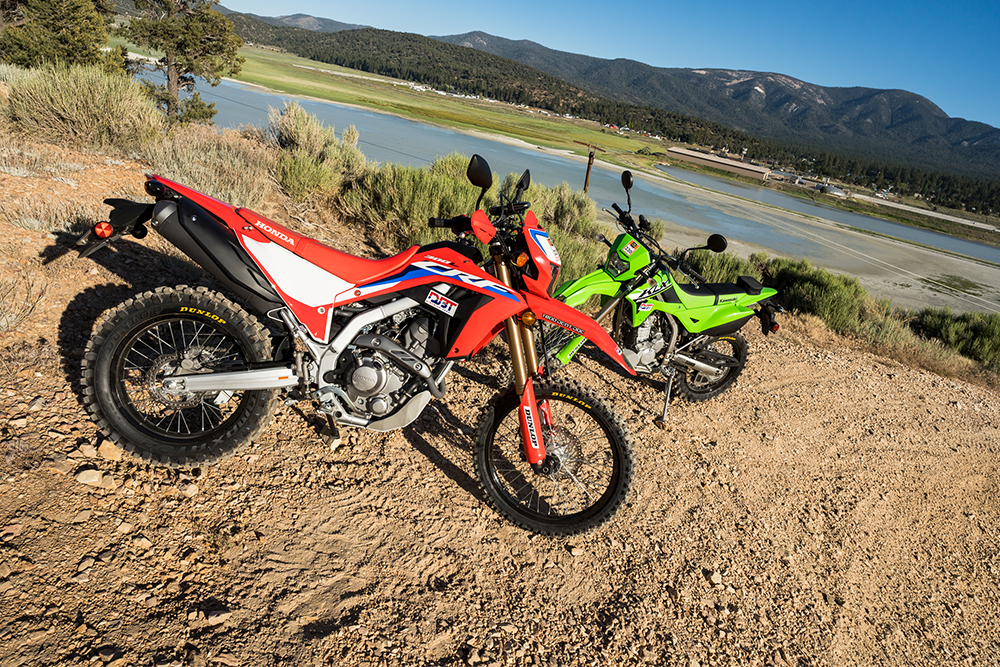
As we previewed in the leadup to our “Torture Test” last week, we set out with a goal of completing the 30th Annual Big Bear Trail Riders famed Big Bear Run, part of the AMA National Dual Sport Series, by tackling the 200 mile “Hard Route” and completing it under the 13 hour time limit they place on it. However, as word spread that we wanted to attempt this on near stock 300cc four-stroke dual sports, a lot of positive comments were thrown out about how cool of an idea this is and a few thought we could finish the “ride” inside the the Top 10 overall at the end of the day. However, we mentioned how a reader thought we could finish high up in the overall and there were a few who doubted us and laughed at the idea of even bringing it up. Comments like “Top 10? lol that’s a pretty silly goal to set for yourself. Finishing the event on those bikes is an achievement in itself” and “on those bikes I’d suggest the intermediate route.” Being the young racers that we are, we couldn’t let that slide so our plans changed from going just to finish and try to capture the best content to reaching the finish as quickly as possible and seeing how far up we could push these bikes.
To note again, the only mods these bikes received were Dunlop AT82/MX53F tires stuffed with Airmousses in the CRF and Nitromousses in the KLX, and Ricochet Off-Road Skid Plates mounted on both bikes. Both mods were imperative as the stock dual sport tires would be very tough in the rocky hill climbs and scary in the flats and on the descents. Plus, the skidplates took a heavy beating but saved the frames and cases from damage when get high centered and wedging through big rocks and boulder fields.
Typically, 150-200 start the Hard Route and it isn’t unsual to see less than 50 finishers at the end of the day. This isn’t a casual dual sport ride, nor is it for the faint of heart. It’s 200 miles and includes nearly all of the toughest trails in and around Big Bear, CA with only a few miles of asphalt on the actual ride. Hundreds of riders each year make this their life’s mission just to reach the finish, yet so little actually accomplish this. And for those that do finish, most are stumbling zombies come Saturday night. For our sake, we had two things working for us in our goal of finishing this ride. First, we have a little bit of talent. How much is up for you to decide but we have a little bit of experience on a dirt bike to help us get through this. Additionally, we have youth on our side and this became apparent as we got into the ride. Whether it was pure age, how easy it was to ride the bikes we were on, or a combination of both, we didn’t get nearly as tired as a lot of the riders around us. Just a couple hours into the 10+ hour day, we could tell a lot of the riders were already looking fatigued as they didn’t have near the amount of aggression on the trail as they did in the opening miles. Or they accepted the fact that a stock CRF300L and KLX300 were keeping up, and at times going faster than them, and they were willing to just let us by without a fight.
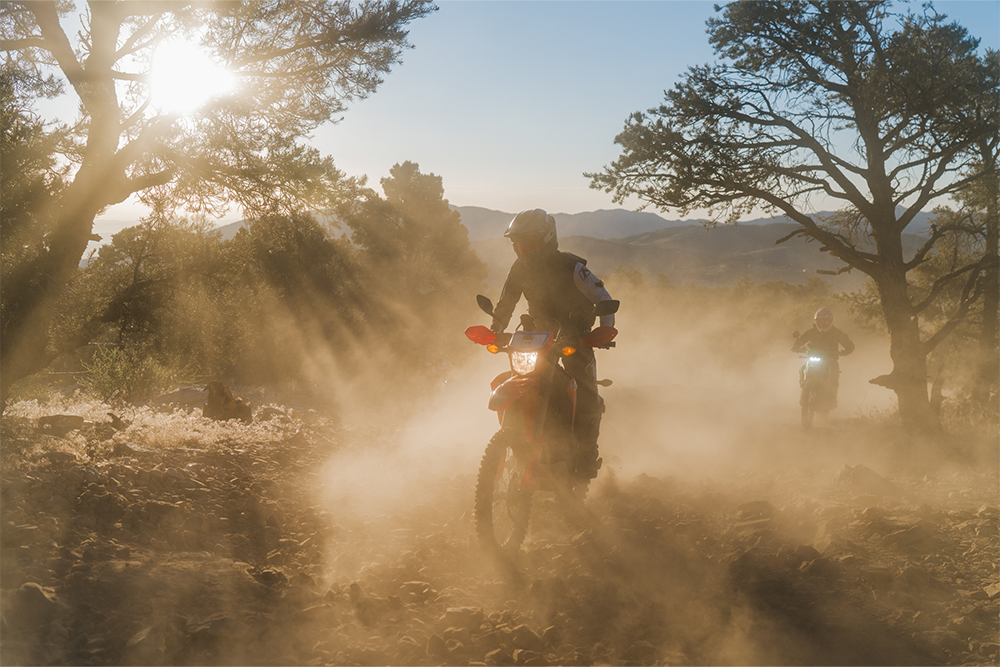
Being racers, we’ve never used a GPS to navigate so we borrowed some older Garmin 78S models, fixed them up on our bike, and got a quick 2 minute tutorial on what to do at dinner on Friday night by a fellow rider. We still weren’t completely dialed in, but we understood the basics and were ready to learn as we went. While getting everything prepped in the parking lot of Friday, we had a lot of riders walking past with a look of disbelief as they saw numbers on both bikes. Some knew what we were up to and wished us good luck, some asked and we gave them the quick rundown, and some just laughed as they walked by.
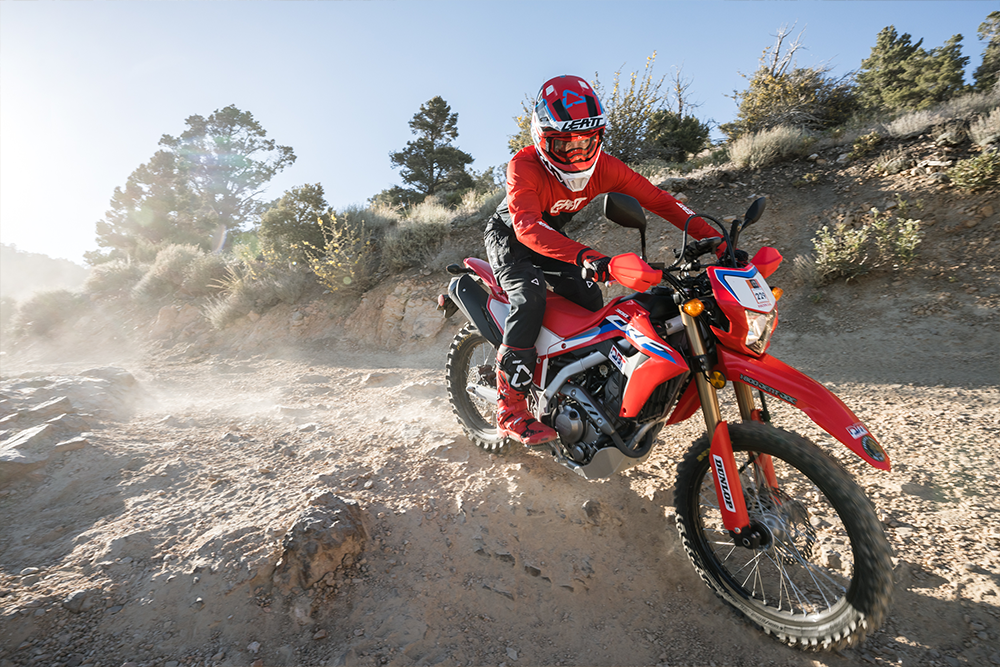
Saturday started with a 4am wakeup call, and as expected, there was already ~15 people staged at the start by this time. We quickly got dressed, ate a little bit of food, and were staged on the start before 4:45am, sitting ~50-60 bikes back already. We talked to some of the other riders in line over the next hour before the 6am start rolled around. We pushed our bike through to grab our first ticket and we set off down the highway and the start of our journey on the small bore bikes had begun. Within the first two miles of highway, we had riders blowing by us well over the speed limit and on the wrong side of the road, down the emergency lane, and anywhere there was a small gap as they raced to the first hill climb. Almost immediately upon hitting dirt at the bottom of Gold Mountain, chaos ensued. The dust was thick, riders were off the side of the hill, and we started passing riders left and right, all while honking our horns of course. Our #1 goal for the day was to durability test the horn on each bike, and it’s safe to say that each horn has passed the daunting test.
As the climb up Gold Mountain continued, we passed more and more riders as they were completely out of control and in for a wild ride while trying to get up some of the rock ledges and loose rock filled climbs. We’d typically honk our horn before passing and while most were nice enough to let us by, a few would look back and pin it to try to avoid the inevitable — a common theme throughout the day. Up and over we went and on the backside of the mountain, about 20 minutes into the ride, we came through checkpoint #1 and were around 15th overall, having passed all those that blew by us on the asphalt and more. The first comment made at the checkpoint was “you’d be doing better if you were on a different bike!” While we didn’t totally agree with this, it set the tone for the rest of the checks to come.
The ride mellowed out for a minute before another fun section of bigger rocks and small climbs where we passed a few more riders and eventually settled around a group of a few individual riders that we’d end up being around for most of the day moving forward. Lots of naviagation mistakes were made, but we were able to key off the more experienced riders at times as we settled into a pace that the bikes could handle. The more technical the terrain, the faster we could go. The rougher or the more high speed the terrain, we’d instantly be caught or dropped by the bigger bikes. They certainly put their $1,000 exhaust systems, ECU’s, and modified suspension to use here. If only we had more power!

While we were mostly having fun early on, there was a good stretch of desert single track that was littered with whoops and took a lot out of us. They were big enough that we had to roll each and every one of them for miles. And even with rolling them, we were pushing the bikes to their limits. In these sections, we feel we perfected scrubbing whoops without letting the wheels leave the ground. Once we got through Redonda Ridge, we mainly stayed in a little lower elevation and didn’t have as much of an issue with the dirty filter.
After spending a solid hour in very thick dust earlier in the day, our bike started running poorly around the 45 mile mark. We quickly checked oil, coolant, and gas and all were topped off. We then immediately thought of the paper air filter and how dirty it must be from sitting in dust and riding through silt for miles and miles just a few hours earlier. To make matters worse, every time we’d climb in elevation, the bike would run worse and worse. The Malcom Smith Trail, one of the hardest features on the route, was especially tough with the bike in its condition as it relied on higher RPMs to stay running, but the loose rocks and tight switchbacks made this more than difficult. Once we made it up that and through the brutally rough and rugged Redonda Ridge, we reached the 2nd checkpoint in 9th and 10th overall. Just as motivation was waning and the thought of having to ride through another 100+ miles of whoops to reach the finish was less than ideal, we had new motivation to hold our place and continue on.
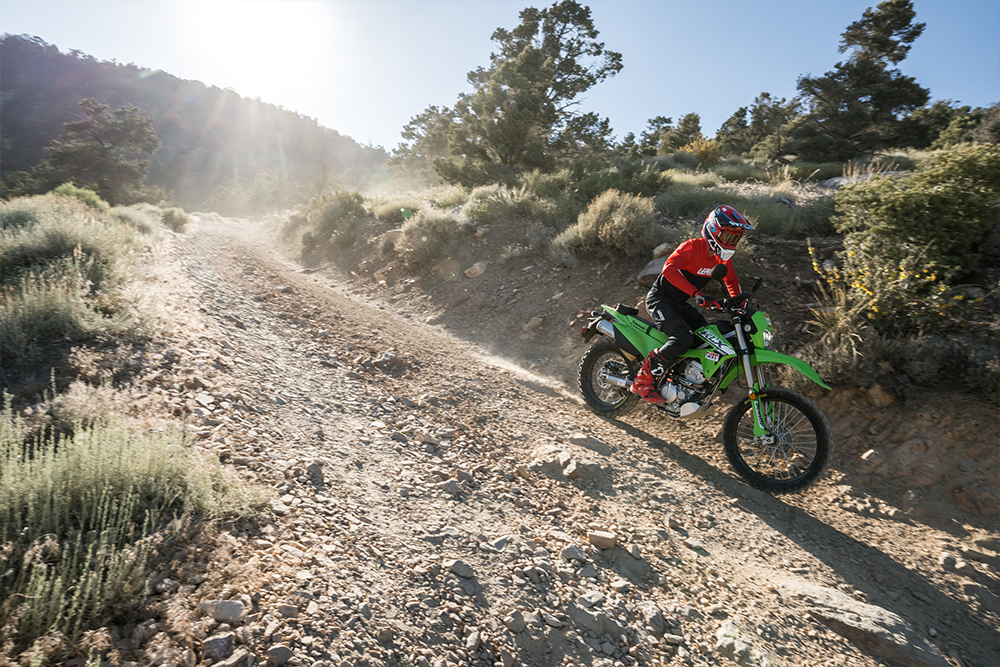
The rest of the 110 mile first loop didn’t feature much more in the way of technical sections, but the wrong line through a large boulder field in the middle of Holcomb Creek stopped us dead in our tracks. The 300+ lb motorcycles were a chore to move through the big boulders once we wedged them in between the wrong rocks or got high centered, and the lack of power to pivot through the section only made matters worse. For the first and only time, we felt at a disadvanatge being on the smaller bikes in the rocks. But being nearly 80 miles in and just now having those thoughts, we felt alright about it considering what most thought for us leading up to the event.

The second 90 mile loop was mostly fast and smooth for the first 60 miles, which led to a few eventually catching us on the long ride up Hwy 38. As we exited the highway and into the rocky roads nearing the final check, we put on a charge and got to checkpoint #5 in 9th and 10th. Ahead was arguably the toughest section on the loop, Pontiac Hill, which we were excited about as we excelled in the rocks and technical terrain. One twist for this checkpoint was at the top of the climb was where we’d receive our tickets, but we didn’t know exactly where that’d be or what it’d look like being rookies. We went up the very first hill and down the backside, quickly turning around as we thought we had missed the bucket with the tickets. We couldn’t find anything, so we turned back onto the trail and ventured on hoping we didn’t miss anything. As we were riding and second guessing ourselves, we were caught by another rider just as we hit the Pontiac climb and all of the rocks in the canyon. We were able to make one clean pass up the canyon and build up a gap over the rider who caught us, but we still weren’t sure where to exchange our tickets. A quick stop to change routes on our GPS was mere feet ahead of the bucket exchange, and Tyler who was riding behind saw it as I rode past it looking at the GPS. Thanks to the horn, we stopped and exchanged our tickets and were back on our way not worrying about that dang ticket.
A few miles and navigation mistakes later, we caught and passed another rider, moving us up to 8th and 9th on the trail. We bombed through the rest of the course as quickly and as safely as we could back through the desert, over Gold Mountain again, and into town.
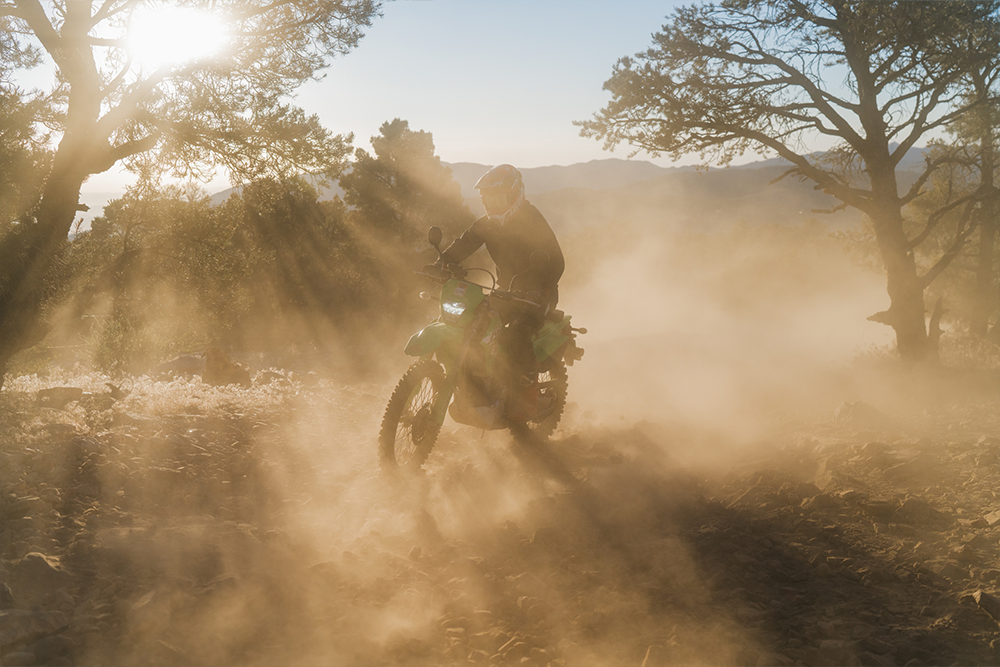
After just under 10.5 hours of riding, we came into the finish 8th and 9th overall and about 2.5 hours behind the first finisher. The first thing we asked ourselves was “Would I do that again?” While the answer on Saturday afternoon was not a definite yes, we’ve come around more to the idea now that we’ve recovered a bit and our wrists, knees, and backs aren’t completely blown out. One of the first things I’d do for next years event would be to add Flexx Handlebars to my ride. The last 30 miles were tough on the wrists with washboard roads, embedded rocks, and more whoops. Every checkpoint we encountered made a comment about the bikes we were on, with most being in disbelief that we were tackling the hard way and not being too quick to hand over a ticket to confirm our passing.
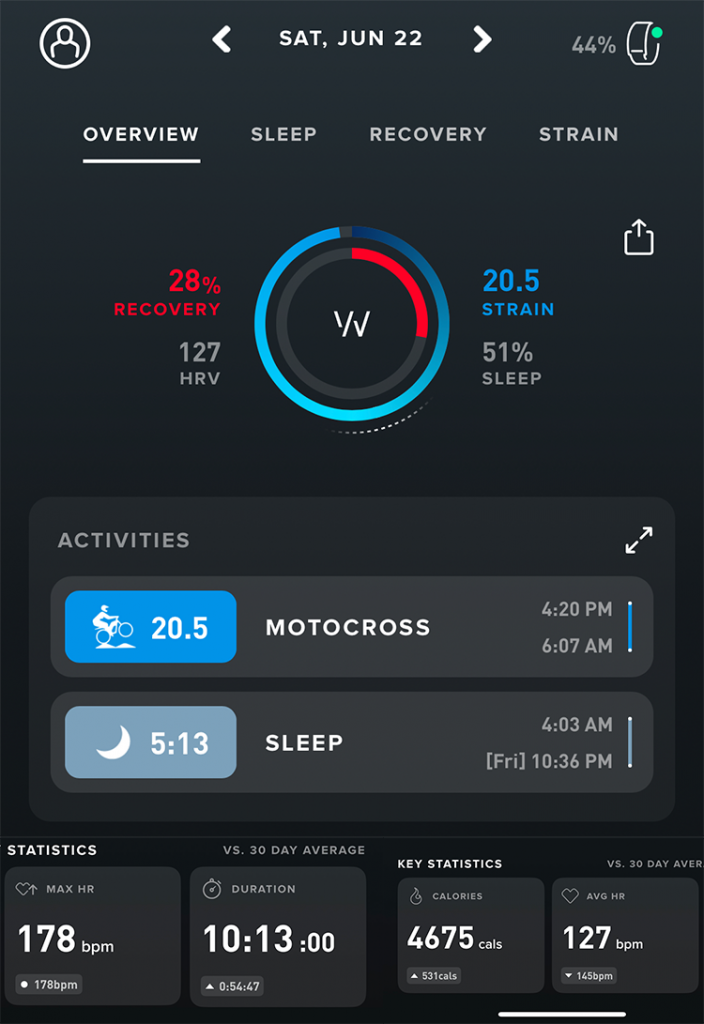

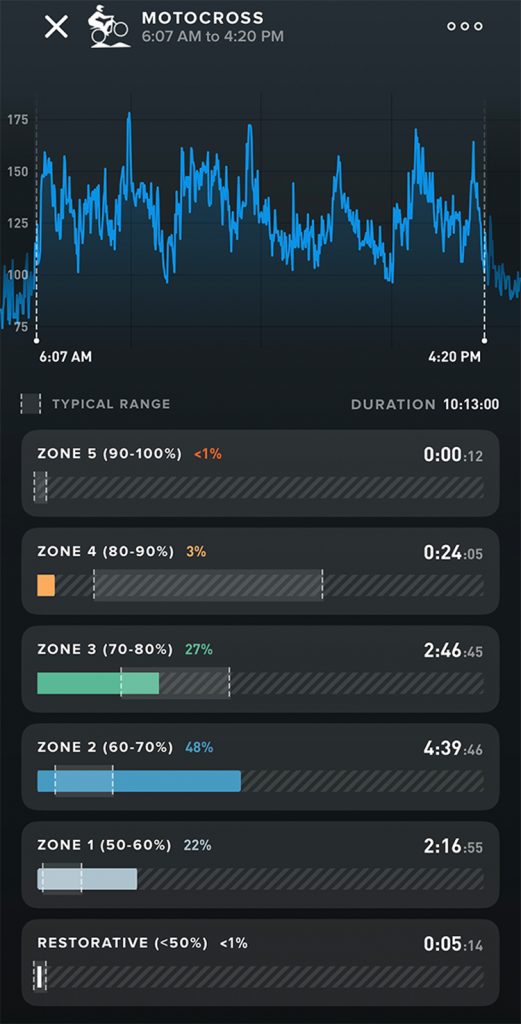
For fuel consumption, the Honda used 1.3 Gal in 60 miles, 1.1 Gal in 50 miles, and 1.7 Gal in 90 miles on this ride. The KLX used slightly more, and was on fumes when completing the 90 mile loop with no gas stops. Fuel for our riders was somewhat minimal, though we expended a lot of energy. I ate a small bowl of cereal, a banana, and a Maurten Solid 225 bar before the start of the ride. At the first gas stop, I ate a Maurten Gel 100 gu and a Kate’s Real Food bar. At the end of Holcomb Creek about 80-90 miles in, I ate another Maurten Solid 225 bar. At the halfway mark, I ate a PB&J sandwhich, another banana, and some fruit. On the second 90 mile loop, we didn’t stop once for any food, just drinking water along the way for that four hour journey.
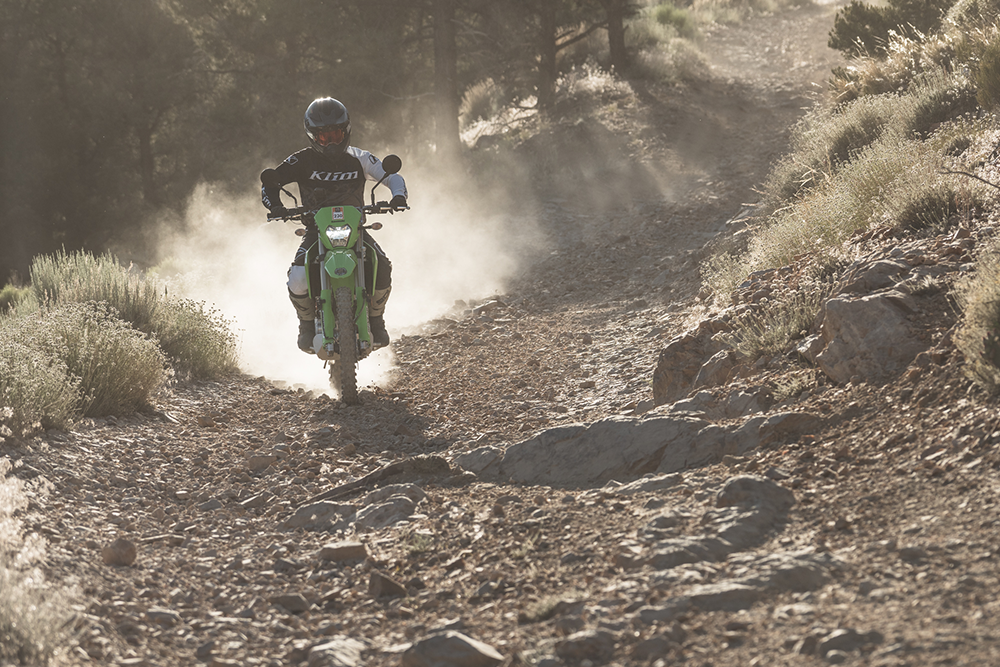
At the end of the day, we accomplished what we originally set out to do — prove how capable these bikes are and show that you don’t need a fire breathing 501 and several thousand dollars in aftermarket parts to enhance (or most of the time detract) your bike’s performance. The Honda finished with everything in tact, including all of the lights, turn signals, mirrors, and reflectors. The Kawasaki lost the right side mirror and the right rear blinker (due to a dumb tip over standing still caused by myself!), and the license plate broke off at some point. For the future in a ride like this, we’d probably opt to take a photo of the plate, print it out and laminate it, and attach that to the bike so we don’t lose the real plate. Will we be back again? Only time will tell, but we wouldn’t mind finding a couple more entry level dual sport bikes and taking another go at it.


